Construct the angles of the following measurements:
(i) 30∘ , (ii)2212∘ , (iii) 15∘
(i) Draw a ray OA. Taking O as center and any radius draw an arc cutting OA at B.

Taking B as center and with same radius as before, draw an arc intersecting the previously drawn arc at point C. Draw a ray 'OD' passing through C. Thus, ∠AOD=60∘
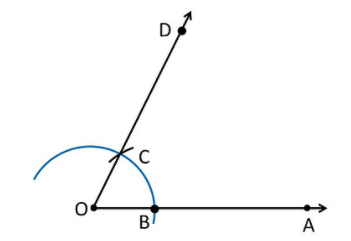
Taking B and C as center with radius more than 12BC draw acrs intersecting at E. Join OE.
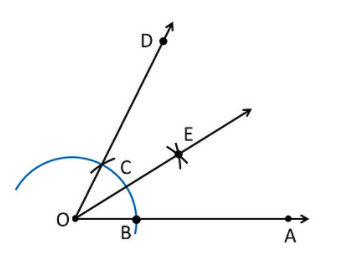
(ii) Draw a ray OA
Taking O as cnter and any radiys draw an arc cutting OA at B.
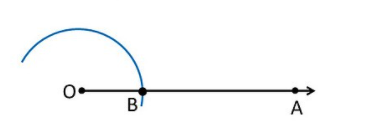
Taking B as centerr and with the same radius as before, draw an arc intersecting the previously drawn arc at C.
With C as center and same radius draw an arch cuttung the arc at D.
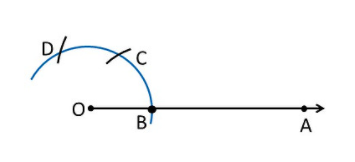
With C and D as center and radius more than 12CD, draw two arcs intersecting at P.
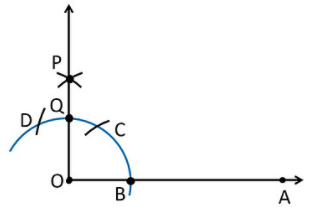
Join OP. Thus, ∠AOP=90∘
Let OP intersect the original arc at point Q.
Taking B and Q as center, and radius greater than 12BQ draw two arcs intersecting at R.
Join OR.
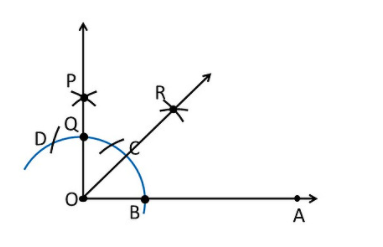
Thus, ∠AOR=45∘
Mark S where ray OR intersects the arc. Taking B and S as center and radius greater than 12BS draw two arcs intersecting at T. Join OT.
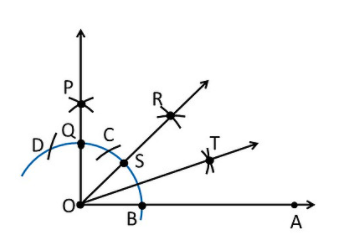
(iii) Draw a ray OA. Taking O as center and any radius draw an arc cutting OA at B.
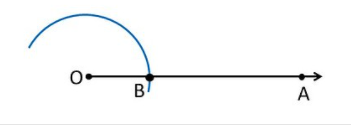
Taking B as center and with same radius as before, draw an arc intersecting the previously drawn arc at point C. Draw a ray 'OD' passing through C. Thus, ∠AOD=60∘
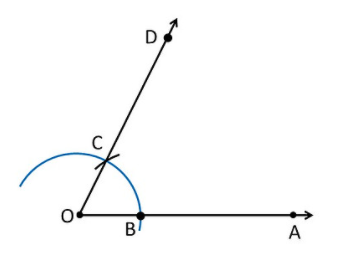
Taking B and C as center with radius more than 12BC draw acrs intersecting at E. Join OE.
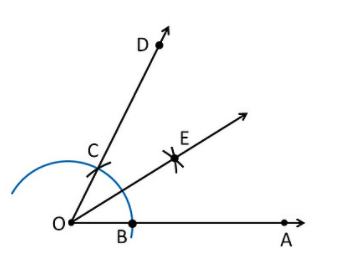
Mark point P where ray OE intersects the arc. Taking P and B as center, with radius more than 12PB draw arc intersecting at F. Join OF
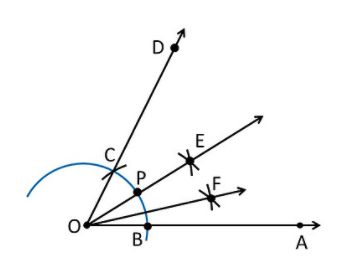
Thus, ∠AOF=15∘
Topper's Solved these Questions
- CONSTRUCTIONSBook:NCERT ENGLISHChapter:CONSTRUCTIONSExercise:EXERCISE 11.2
Explore 5 Videos
- CONSTRUCTIONSBook:NCERT ENGLISHChapter:CONSTRUCTIONSExercise:Example
Explore 1 Video
- CIRCLESBook:NCERT ENGLISHChapter:CIRCLESExercise:Exercise 10.3
Explore 3 Videos
- COORDINATE GEOMETRYBook:NCERT ENGLISHChapter:COORDINATE GEOMETRYExercise:Solved Examples
Explore 4 Videos
Similar Questions
Construct the angles of the following measurements: 300 (ii) 750 (iii) 1050
View SolutionConstruct the angles of the following measurements: 1350 (ii) 150 (iii) 22102
View SolutionConstruct angles of the following measures using compass:
90∘
View SolutionConstruct angles of the following measures using compass:
60∘
View SolutionIs it possible to form a triangle with angles of the following measures ?
(i) 25∘,65∘,90∘
(ii) 50∘,120∘,30∘
(iii) 130∘,40∘,10∘
(iv) 70∘,70∘,50∘
(v) 30∘,90∘,90∘
(vi) 60∘,50∘,60∘
View SolutionExpress the following angles in radians (i) 1, (ii) 20∘ (iii) 135∘
View SolutionExpress the following as percents:
(i)6:5
(ii) 30:80
(iii) 3:12
View SolutionWrite each of the following as decimals:
(i)2210
(ii) 32
(iii) 25
View SolutionConstruct the following angles :
(i) 60∘ (ii) 30∘ (iii) 15∘
View SolutionConstruct the following angles :
(i) 90∘ (ii) 45∘ (iii) 75∘
View Solution